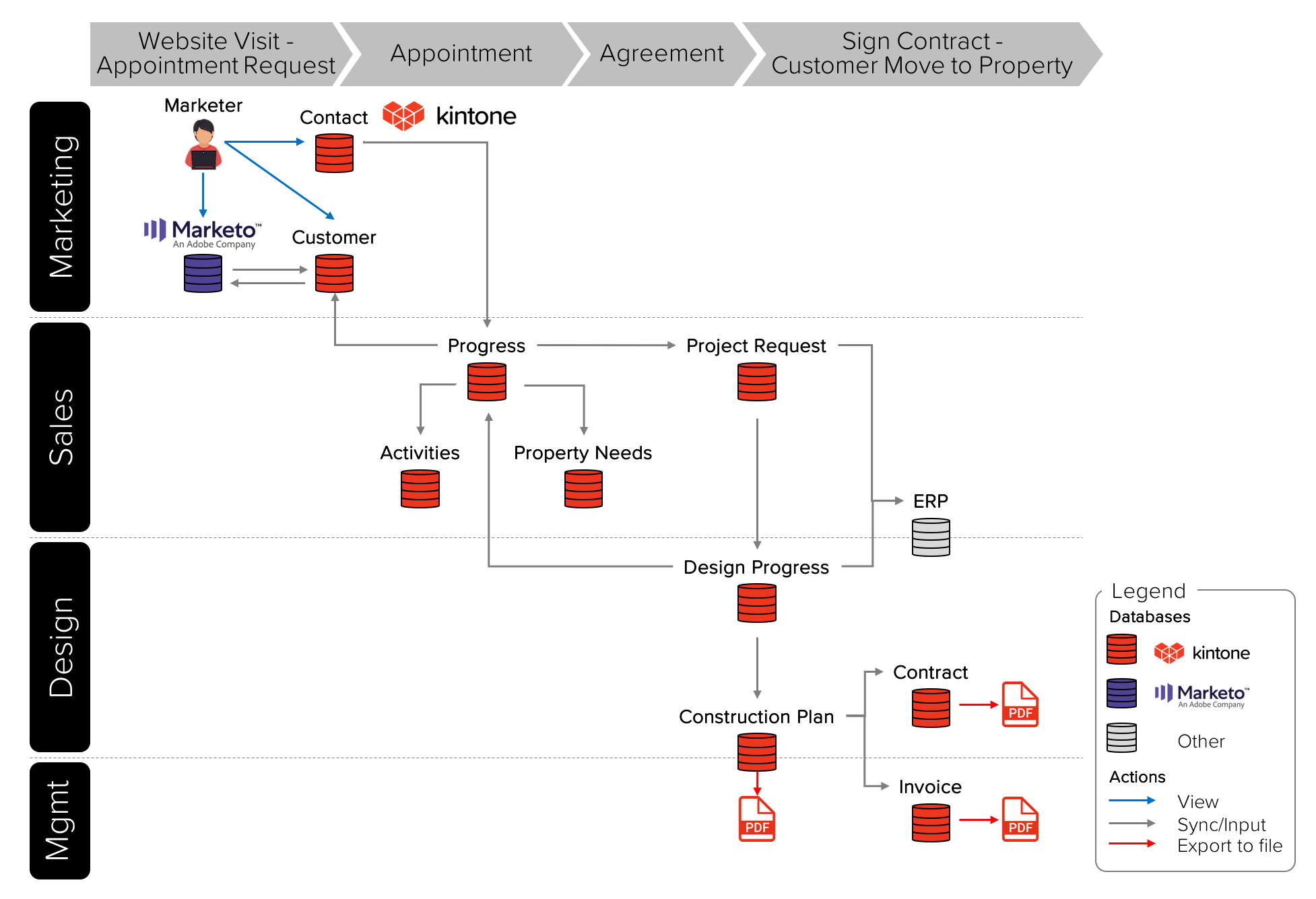Customer Stories

Marketing Specialist, Marketing Coordinator
This case study looks at a Japanese home and lifestyle company that gives customers the ability to modernize pre-existing homes rather than buying a new home. The company operates under the philosophy of “making life in Japan the smartest and most amazing in the world.”
Japan’s housing market has its challenges. In Japan, it’s common practice to purchase a newly-constructed house under a long-term loan agreement rather than renovate a pre-existing home. While starting over allows families to design their new home to their exact specifications, it often puts them under a long-term financial burden. It also places additional resource burdens on the environment.
The company offers an alternative option to its customers through its total-renovation services. In addition to customers who are rebuilding their current homes, the company offers specific services for customers who plan to purchase and renovate second-hand homes, including a one-stop service where customers can communicate with real estate companies, banks, construction companies, and design agencies through the company.
This process not only gives customers better oversight on their renovation process, it also helps them make decisions with the support and insight of housing professionals at every step of the way.
Prior to Kintone, the company had no centralized CRM system. The lack of centralization created two key problems:
The company’s Marketing Specialist and Marketing Coordinator explained their challenges in detail:
Marketing Specialist: “We had difficulty in utilizing data effectively with our old CRM tool because we could not always thoroughly input information. The primary reason we installed Kintone was to visualize the whole marketing flow, so that we could know which customers came in from which channel and how they finally came to sign the contract.”
Marketing Coordinator: “We were using a lot of paper to manage customers, and there were no IDs to link customer information. This meant that information from each flow on the same customer, such as basic customer information, design requirement definitions after purchasing the property, process management and the issuance of invoices, was all managed separately. Between all departments, we had to input the same information about four or five times in total for the same customer.”
The company also faced another challenge: the number of people visiting their showrooms each month had double compared to the previous year. The increase in potential customers put additional demand on the sales representatives, leaving them limited time to add data to the company’s fragmented customer relations management system.
Between all departments, we had to input the same information about four or five times in total for the same customer.
The company decided to overhaul its own CRM after it became clear the company could no longer successfully expand or grow without addressing its data-management processes.
After an initial round of research into potential software solutions, the company settled on Kintone. According to the Marketing Coordinator, Kintone’s ease-of-use and agile platform made it ideal for a company continually adding and expanding upon its list of services:
“Kintone has a user-friendly interface and flexibility that supports workflow customization as needed. When we shared this aspect with our team, they were really excited. How often do you find a platform that everyone can use?
The Marketing team initially used Kintone on a trial basis to manage its budget and marketing performance. But the more they used it, the more they liked it, and their enthusiasm spread to other teams. Eventually, the entire company was using Kintone to manage basic customer information, inquiries, reservations for showroom visits, prospect scores based on actions taken, and other types of information.
Kintone has a user-friendly interface and flexibility that supports workflow customization as needed.
The Marketing team also had another reason for choosing Kintone: it integrated with Marketo. Marketo is a popular marketing automation platform that let’s marketing teams fine tune their digital engagement with potential and current customers.
The department, which relied on Marketo prior to Kintone, now uses the data collected from Kintone to create highly-tailored marketing content for its customers. In a recent drip email campaign, the marketing team used data from Kintone to create customer-specific content based on the customer website browsing habits. The result? “We received a lot more responses than any of our recent email campaigns,” said the Marketing Specialist.

Data-less decisions are a thing of the past now. According to the Marketing Specialist, “Thanks to Kintone, we have created an environment where we can conduct high-quality marketing based more strongly on data. This has helped us improve our lead generation tremendously. For example, when we distributed emails based on customers’ website browsing information as acquired by Kintone from Marketo, we received a higher response rate than usual.”
The company also saw significant improvement in other areas of operations management: previously, teams input the same information four or five times across all departments, with some information being duplicated or overwritten depending on the way a record was updated. This was especially nasty for the sales team, who needed about 50-60 different data fields on each customer in order to complete a record.
“The sales team needed to manually add certain fields every time they created a customer record in the old system,” said the Marketing Specialist. “It took each sales member around 30 minutes to add all the information, which, when multiplied across 100 sales representatives and each individual customer record, is a lot of time.”
Kintone’s ability to automatically generate certain record fields, as well as the platform’s consolidated view of each record, drastically reduced the amount of time each sales member needed to spend in a record.
The management team also found another use for Kintone: originally, performance management for each sales representative was conducted manually, but Kintone allowed leadership to automate the entire process, reducing a 30-minute calculation to a 2-3 minute one.
Thanks to Kintone, we have created an environment where we can conduct high-quality marketing based more strongly on data.
The Marketing Specialist believes Kintone will allow the company to collect even more valuable data on customers as their use increases. “We hope to take any information gathered during consultations with customers when they visit our office, such as lifestyle, hobbies, personal preferences, children’s ages, and so on, and combine this with information acquired online through MA tools so as to engage in communication in a manner that suits each customer best based on this information,” he said.
The company is also working on building a property database in Kintone that will automatically generate proposals to customers considering renovation.
Kintone Product Introduction Video
